Hello Folks!!
Today, we are going to discuss some of the best mobile app development companies in Detroit.
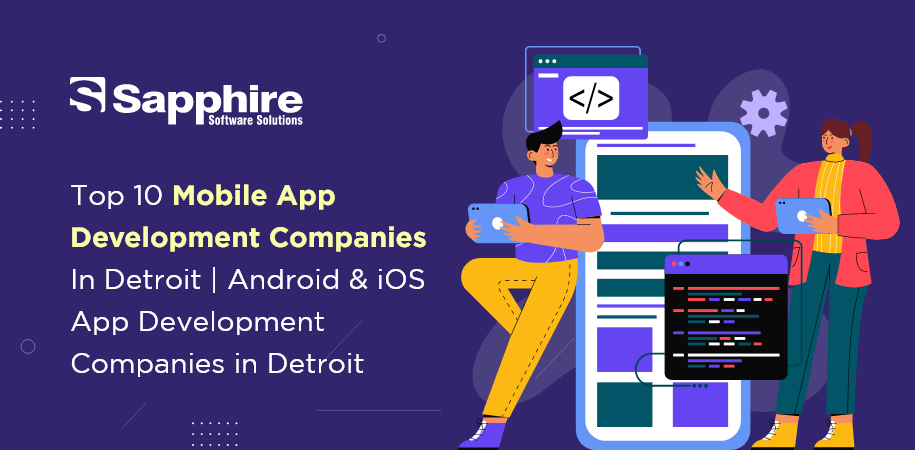
Hello Folks!!
Today, we are going to discuss some of the best mobile app development companies in Detroit.
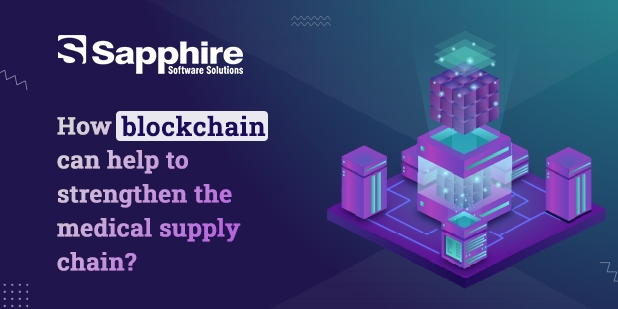
The medical supply chain and technology is an essential component in the process of ensuring that patients all over the globe have access to necessary pharmaceuticals, medical equipment, and healthcare supplies. Nevertheless, this complex network faces several difficulties, such as the proliferation of counterfeit goods, a lack of transparency, inefficiencies, and poor traceability. Blockchain technology, which was first designed to ensure the safety of digital transactions, provides a viable answer to these problems. This extensive blog article will examine how blockchain technology supply chain management can change the medical supply chain by increasing efficiency, expanding transparency, and saving lives.
Blockchain technology in SCM can strengthen the medical supply chain by addressing the challenges associated with its complex and fragmented nature. The medical supply chain involves numerous stakeholders, including manufacturers, distributors, pharmacies, hospitals, and regulatory bodies, relying on effective coordination and timely access to accurate information.
The medical supply chain has traditionally been plagued by a lack of transparency, inefficient processes, and vulnerabilities to errors and fraud. Paper-based documentation and disparate systems make it challenging to track and trace products accurately, leading to delays, increased costs, and potential risks to patient safety.
Blockchain offers a decentralized and transparent ledger that can be shared among all stakeholders, creating a unified system for recording and managing the supply chain processes. This shared, immutable record provides a single source of truth, allowing for real-time visibility into the movement of products, transactions, and inventory levels.
By implementing blockchain technology, stakeholders can comprehensively understand the medical supply chain, enabling them to identify inefficiencies, streamline processes, and make informed decisions. The transparent nature of the blockchain also enhances trust among stakeholders, as they can verify the integrity and authenticity of the recorded information.
Additionally, blockchain facilitates secure and efficient data sharing among stakeholders while ensuring patient privacy. Authorized participants can access relevant information securely, leading to improved collaboration, better decision-making, and optimized inventory management.
The blockchain’s ability to enhance the understanding of the medical supply chain also extends to regulatory compliance. Regulatory bodies can leverage the transparent and auditable nature of the blockchain to verify compliance with standards and regulations, reducing administrative burdens and improving the efficiency of regulatory oversight.
Blockchain technology can significantly enhance traceability and authentication in the medical supply chain. By leveraging the decentralized and immutable nature of the blockchain, every step of the supply chain process can be recorded, providing real-time tracking and verification of products.
Counterfeit drugs have become a primary concern in the healthcare industry, posing significant risks to patient safety. With blockchain, each product can be assigned a unique identifier recorded on the distributed ledger, allowing for easy verification of its origin, manufacturing details, and distribution history. This transparency enables healthcare professionals and patients to authenticate the legitimacy of medications, reducing the risks associated with counterfeit drugs.
Furthermore, the immutable nature of the blockchain ensures that the recorded information cannot be altered or tampered with, providing an added layer of security and trust. This feature is particularly crucial in the medical supply chain, where accurate and reliable information about product authenticity and integrity is vital.
By implementing blockchain technology, stakeholders can create a comprehensive, transparent ecosystem that enables end-to-end traceability. This traceability empowers regulators to monitor the movement of products, identify potential bottlenecks, and take prompt actions in case of any irregularities. It also allows for efficient recall management, as the blockchain can quickly trace the affected products back to their source, ensuring a timely and targeted response to potential safety issues.
Using blockchain technology across the medical supply chain will result in streamlined operations and increased productivity. Automating various activities, including inventory management, order fulfillment, and payment settlements, is made possible by smart contracts, which are self-executing agreements maintained on the blockchain. This automation lessens the administrative load, reduces the potential for human mistakes, and quickens the entire supply chain process, ultimately resulting in cost savings and more expedient delivery of essential medical items.
Blockchain technology decreases the risk of supply chain interruptions by eliminating dependence on human procedures, ensuring that medical items are instantly accessible when required. The need for human involvement is eliminated, and the risk of mistakes or delays is reduced, thanks to the automation made possible by smart contracts, which allow the automatic execution of established rules and conditions. For instance, if a drug’s expiry date is approaching, the smart contract may send automated warnings to the necessary stakeholders, ensuring that the medication is removed from inventory at the appropriate time and promptly replaced with new supplies.
The medical supply chain needs to have efficient inventory management since this guarantees a sufficient supply of pharmaceuticals and supplies while reducing the amount of waste. The distributed ledger of blockchain technology offers insight into inventory levels in real-time, empowering stakeholders to manage and monitor stock levels precisely. This technique, driven by data rather than intuition, makes demand forecasting, streamlined procurement, and effective inventory distribution much more accessible. As a result, healthcare practitioners are sure to have access to the appropriate items at the appropriate times.
By integrating blockchain technology, suppliers, distributors, and healthcare institutions may share a synchronized picture of inventory levels. This enables greater coordination and reduces the danger of shortages or overstocking of supplies. Stakeholders can spot possible bottlenecks, forecast demand variations, and make educated choices about inventory management because of the blockchain’s openness and real-time nature. As a consequence, medical service providers can maximize the efficiency of their stockpiles, significantly cut down on product waste, and guarantee a steady supply of essential medical supplies.
The medical supply chain must comply with many regulatory standards, the most important of which are product safety, quality assurance, and licensing. The technology behind blockchain may make it easier to comply with regulations by producing an auditable record of all transactions and operations. This increases both transparency and accountability. This immutable record may be accessed by regulators so that they can check compliance with standards, detect any problems, and swiftly take appropriate steps. And therefore increasing patient safety and decreasing the complexity of regulatory processes.
Using blockchain technology, each stage of the supply chain process may be recorded and authenticated by several different parties. These stages include manufacturing, transportation, and distribution. The regulators can verify compliance with regulatory requirements, such as Good Manufacturing Practices (GMP) or Cold Chain Management, using this record, which is both visible and unchangeable. This ensures that medical items fulfill the needed quality and safety standards by reducing administrative costs and accelerating regulatory monitoring; both are accelerated by using blockchain technology, which streamlines the auditing process.
Many stakeholders in the medical supply chain need to share data to achieve successful coordination. However, worries about the privacy and security of one’s data often act as a barrier to practical cooperation. Blockchain technology provides a decentralized and encrypted platform for safe data exchange. This makes it possible for authorized parties to access important information while still protecting the patient’s right to confidentiality. This makes it possible for healthcare providers, manufacturers, and regulators to communicate data in an effective manner, which ultimately leads to enhanced decision-making, supply chain optimization, and the results of public health studies.
Through cryptographic safeguards and decentralized consensus procedures, blockchain technology guarantees the authenticity and safety of stored data. Patient information, such as their prescription history and other medical records, may be safely maintained on the blockchain, ensuring that only authorized users can access the information. This open and secure platform allows healthcare practitioners to have a full perspective of a patient’s medical history, paving the way for correct diagnoses, suitable treatment regimens, and enhanced patient care.
Implementing blockchain in the medical supply chain has specific difficulties, even though it has several advantages. Integration of technology, standardization of processes, scalability, and compliance with regulatory frameworks are some. In addition, addressing concerns about privacy and ensuring that data is protected are essential issues. All stakeholders must work together to build interoperable blockchain solutions, set shared standards, and invest in solid infrastructure.
Implementing blockchain technology requires close cooperation and coordination among various stakeholders, including those in the healthcare industry, manufacturers, government authorities, and those that offer the technology. It is essential for there to be a standardization of data formats, interoperability of blockchain networks, and an alignment of regulatory frameworks to have a flawless deployment. Because so many transactions and data points are involved in the medical supply chain. And scalability is another factor that must be considered. Efforts must be made to guarantee that blockchain networks can handle the number of transactions while preserving their efficiency and speed.
Hold immense potential that transform the medical supply chain with top blockchain development company, addressing long-standing transparency, traceability, and efficiency issues. By leveraging blockchain’s decentralized and immutable nature. Stakeholders can establish a trustworthy ecosystem that ensures the integrity of medications, streamlines operations, and ultimately saves lives. As a Blockchain development service provider, we can develop the perfect blockchain solution that perfectly suits your business. Hire Blockchain developers in USA, India for your upcoming projects growth and development.
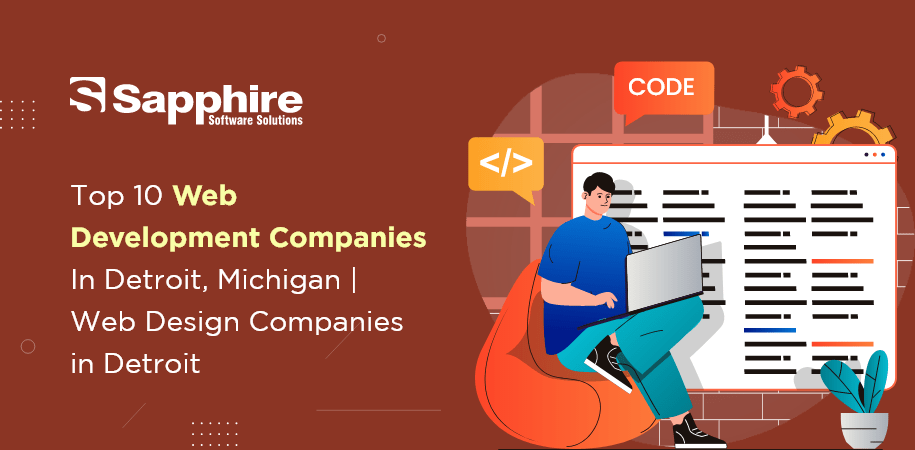
Hello Folks!!
Today, we are going to discuss some of the best web development companies in Detroit, Michigan.

Hello Folks!!
Today, we are going to discuss some of the best software development companies in Memphis.
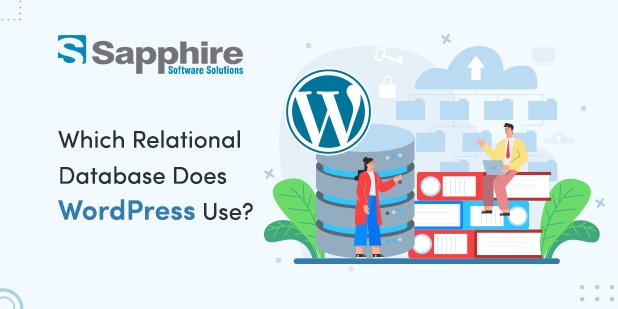
The widely used content management system (CMS) known as WordPress extensively uses the relational database management system (RDBMS) known as MySQL as its default database. Since its beginning in 2003, when WordPress was first released, MySQL has been the database system of choice. In this blog, we will understand the factors that led to WordPress’s selection of MySQL by the WordPress development company as its database backend, its connection with the database, and any potential alternatives.
WordPress and MySQL are open-source projects that adhere to the same principles of transparency, cooperation, and community-driven development. WordPress complements MySQL’s open-source characteristics since it is a free and open-source platform. The open-source component encourages creativity, openness, and the capacity to modify the program to meet specific demands. This interdependence enables access to, modification of, and contribution to the source code of both WordPress and MySQL by developers and contributors from all over the globe.
One of the most popular open-source databases worldwide is MySQL. Its reliability, effectiveness, and scalability are the reasons for its appeal. It is now simpler to create, launch, and manage WordPress websites thanks to the broad community support that assures users can discover answers, ask for help, and share MySQL expertise. A broad array of resources, such as documentation, tutorials, forums, and plugins, are made available by the MySQL community.
WordPress needs a database system that can support the demands of a large user base since it runs millions of websites. The efficiency and scalability of MySQL are well-known, making it the perfect database for a platform like WordPress. WordPress websites are generally faster and more responsive because of MySQL’s efficient data storage, caching techniques, and improved query processing. WordPress can support websites of various sizes, from personal blogs to enterprise-level applications, thanks to MySQL’s flexibility to expand to manage growing volumes of data and traffic.
WordPress manages and organizes its data using a relational database structure. The robust relational database management system MySQL fits quite nicely with this framework. Effective data management and retrieval are made possible by the capacity to establish links between various sorts of data (such as posts, users, and comments) using primary and foreign keys. Complex queries, data integrity monitoring, and practical storage of structured data are all made possible by the relational structure.
The default database choice many hosting companies offer is MySQL, which makes it easier to set up and deploy WordPress websites. Many WordPress ecosystem plugins, themes, and utilities are also made expressly for MySQL. MySQL’s seamless integration with the other WordPress stack elements ensures compatibility and efficient functioning. This compatibility improves the platform’s functionality and usability and enables developers to utilize MySQL to its fullest extent in their WordPress applications.
MySQL’s dependability and stability are crucial for WordPress since they guarantee the safe storage and retrieval of vital website data. Starting in the middle of the 1990s, MySQL has undergone extensive development, which has aided in the growth of its maturity and stability. MySQL has undergone substantial testing and improvement over the years, fixing a number of bugs and performance problems. MySQL’s extensive use and lengthy development history give rise to trust in its dependability and potential WordPress compatibility in the future.
Through the use of unique plugins, developers may expand the capabilities of the WordPress platform. WordPress plugins can more easily include customized database operations because of MySQL’s flexibility and extensibility. Developers may use MySQL’s sophisticated capabilities, develop their SQL queries, and communicate directly with the database. This degree of extension and customization enables developers to produce specialized solutions and adhere to specific project needs.
The rapid data retrieval and storage made possible by WordPress makes websites quicker and more responsive. WordPress makes use of a number of MySQL speed optimization strategies. For instance, MySQL offers indexing tools that help WordPress to streamline search processes and expedite query execution. The query caching features of MySQL assist decrease the need for repeated database queries, enhancing speed as a whole.
WordPress often publishes updates that might include modifying the database’s schema or structure. WordPress updates automatically identify any needed database modifications and run the appropriate SQL queries to alter the schema. Because WordPress and MySQL are compatible, upgrades and integration between the WordPress core and the underlying database always go as planned.
Because of its intuitive design and simplicity, MySQL is famous for being accessible to seasoned engineers and newbies. The ease of use of MySQL is advantageous to WordPress as a platform that strives to democratize website construction. Users of WordPress can successfully manage the data on their websites, create backups, and carry out database operations thanks to MySQL’s user-friendly interface.
Users of WordPress are given flexibility and freedom of choice because of its mobility, which prevents them from being tied to a particular hosting company or database system. Since MySQL is WordPress’s default database management system, databases may be moved around. Users may effortlessly move their WordPress installations across hosting companies if the new host supports MySQL.
Although MySQL is the platform’s default and most-recommended database system, other database alternatives may be utilized. This post examines several other WordPress database systems, emphasizing their benefits and drawbacks.
Popular MySQL substitute MariaDB is regarded as a drop-in replacement. After Oracle Corporation bought MySQL, the original MySQL engineers produced it. MariaDB is now widely available from hosting companies, making it more straightforward for WordPress users to switch from MySQL to MariaDB. While keeping MySQL compatibility, MariaDB delivers stronger security, better speed, and more functionality. Most of the time, switching from MySQL to MariaDB is smooth and doesn’t involve making significant modifications to the WordPress code or settings.
A robust and feature-rich open-source relational database management system is PostgreSQL. It includes sophisticated features, scalability, data integrity, and support for complicated queries. Compared to MySQL, PostgreSQL is less often used with WordPress, although it has gained popularity among developers who need sophisticated database features. Since PostgreSQL is not natively supported, using it with WordPress may need extra setup and modification. However, WordPress can be compatible with PostgreSQL using the correct database drivers and plugins.
An independent, serverless, file-based relational database management system is SQLite. Unlike MySQL or PostgreSQL, SQLite works by directly accessing database files and doesn’t need a separate server process. It is a perfect alternative for tiny WordPress installations or development settings since it is a lightweight and practical choice. However, SQLite may not scale well for high-traffic websites or applications that demand concurrent database access. Plugins or custom programming are often used to provide compatibility and manage the SQLite database file when integrating SQLite with WordPress.
WordPress and object-oriented databases like MongoDB and CouchDB have both been investigated by several developers. These databases provide flexible data structures, horizontal scaling, and easy object-oriented programming language integration. However, since object-oriented databases have different data storage and retrieval procedures than relational databases, utilizing them with WordPress necessitates extensive adaptation and development work. To connect the relational database structure of WordPress with the object-oriented database, plugins or custom code are required.
Before making the transfer, it is vital to test and confirm that the new platform is compatible with all necessary plugins and themes. Even though WordPress is compatible with various databases, it is essential to maintain compatibility with the plugins, themes, and other components that make up the WordPress ecosystem. Many plugins and themes are created with MySQL in mind, and as a result, compatibility with other databases could be limited or nonexistent in some instances.
When dealing with alternative database systems for WordPress, documentation, tutorials, and a community willing to help are all necessary components. Because it has such a large community and many resources, MySQL makes it much simpler to locate help and solutions. Even if the communities around alternative databases could be smaller, ensuring sufficient documentation and community support can assist in overcoming issues that arise during creation and maintenance.
When deciding on an alternative database system for your WordPress site, consider how well it performs and how easily it can be expanded. Alternate databases should be considered based on their capacity to manage your website’s anticipated demand and expansion. MySQL is well-known for its performance and scalability characteristics.
Ensure that the alternative database system you want to use with WordPress is supported by the hosting company you selected. While MySQL enjoys widespread support, other databases may get varying degrees of assistance depending on the hosting platform they are used with. Check to see sure the hosting environment has the tools and settings required to support the database management system that you’ve selected.
MySQL is the database management system that is recommended for use with WordPress, and it is the one that is used the majority of the time. The open-source nature of MySQL, together with its popularity, performance, scalability, interoperability, maturity, and reliability, led to its selection as the database management system. However, WordPress can also function with other databases, including MariaDB, PostgreSQL, SQLite. And object-oriented databases, with variable degrees of compatibility and customization depending on the database.
If you decide to investigate other databases, it is crucial to be sure they are compatible with the plugins and themes you want to use. MySQL is still the most extensively used and maintained database within the WordPress ecosystem. It provides a solid basis for the administration of WordPress-powered websites and the organization of data stored on them. Whether you are looking to hire WordPress developers or need to avail our top-notch WordPress development services, Sapphire is the right destination for you.

Hello Folks!!
Today, we are going to discuss some of the best mobile app development companies in Memphis.
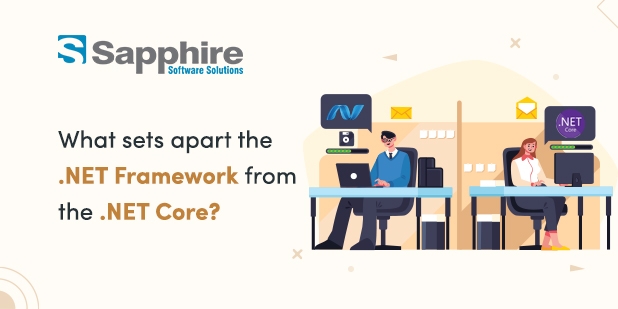
Microsoft has developed two software development frameworks, DOT NET Framework and DOT NET Core, used to design and execute applications. Even though they are pretty similar, many things separate them. In this piece, we’ll examine these variations and discover their origins.
Microsoft first made available the DOT NET Framework in 2002. It gave developers a reliable platform to build Windows programs, web services, and other kinds of software. The DOT NET Framework’s vast class library and runtime environment helped it become extensively used and popular among developers.
On the other hand, DOT NET Core is a more recent development platform that Microsoft unveiled in 2016. DOT NET Core was created from the ground up to overcome some of the constraints and difficulties encountered by the DOT NET Framework. It was intended to be the DOT NET Framework’s cross-platform, lightweight, modular replacement.
Let’s now explore the differences between the DOT NET Framework and DOT NET Core.
Platform compatibility is one of the most significant differences between the DOT NET Framework and the DOT NET Core. The DOT NET Framework is heavily integrated into the Windows environment and mainly targets Windows operating systems. It is incompatible with non-Windows systems like Linux and macOS since it depends on Windows-specific APIs and libraries. As a result, DOT NET Framework-based apps can only be used with Windows-based computers.
On the other hand, DOT NET Core was created with a cross-platform perspective in mind. It enables programmers to create Windows, Linux, and macOS apps by supporting those three operating systems. Because of its cross-platform functionality, DOT NET Core is a top option for building contemporary apps that must be distributed across several platforms or take a cloud-centric approach.
The models used for deploying applications vary between the DOT NET Framework and DOT NET Core. The DOT NET Framework employs a method known as global installation, in which the framework is deployed on the target system, and applications created using it rely on the installed version. Versioning conflicts and compatibility concerns between various apps using the same system might sometimes result from this installation requirement.
Self-contained deployments, in contrast, are a new deployment paradigm that DOT NET Core introduced. It removes the possibility of versioning conflicts and streamlines the deployment procedure. Applications may include all required dependencies, such as the runtime, libraries, and the DOT NET Core framework, in a single package with self-contained deployments. This implies that DOT NET Core apps may be installed and used without requiring a global framework installation.
Performance is another area where the DOT NET Framework and DOT NET Core diverge. The Common Language Runtime (CLR), which has a Just-In-Time (JIT) compiler, is used by the DOT NET Framework. At runtime, the JIT compiler converts Intermediate Language (IL) code into native machine code, which may add overhead and slow down program starting times.
In contrast, DOT NET Core debuted RyuJIT, a new Just-In-Time compiler intended to perform better than the JIT compiler used by the DOT NET Framework. The tiered compilation is one of the many optimizations that are part of DOT NET Core and may help improve the speed of applications. Due to these speed enhancements, DOT NET Core is an appealing option for high-performance applications and settings with limited resources.
Due to its vast class library and dependence on Windows components, the DOT NET Framework is quite extensive. An application’s size and footprint are crucial considerations, mainly when a small file size or rapid deployment is necessary. Applications created using the DOT NET Framework tend to have bigger disk footprints, making them less appropriate for situations with limited storage or network bandwidth.
DOT NET Core, in comparison, has a lower footprint, mainly due to its modular architecture and capacity to only include the essential components in the application package. With a smaller footprint, applications may download faster, use less disk space, and perform better in contexts with limited resources. Therefore, DOT NET Core is often used when creating apps for mobile platforms, cloud computing environments, or situations. Where reducing the size of the program is essential.
The DOT NET Framework and DOT NET Core have different development and release cycles. The DOT NET Framework adheres to a conventional release process in which minor changes and new features are combined into significant releases, and the framework is seldom updated. New features and bug fixes may sometimes not be made available immediately because of this release cycle.
Developers prioritizing agility and the ability to use the most recent features and improvements choose DOT NET Core due to its more regular release cycle. DOT NET Core, in comparison, has a more flexible release schedule. Updates and enhancements are made available as soon as they are ready, according to the “release early, release often” concept. This strategy enables Microsoft to respond rapidly to problems and helps developers take advantage of new features and bug patches more quickly.
Although the DOT NET Framework and DOT NET Core both use the same set of programming languages and frameworks, there are some distinctions in the technologies and workloads that each supports. A larger ecosystem and various libraries, components, and frameworks, many of which are designed specifically for Windows, are supported by the DOT NET Framework. It offers comprehensive technical support, including Windows Presentation Foundation (WPF), Windows Forms, ASP DOT NET Web Forms, and Windows Communication Foundation (WCF).
As opposed to the DOT NET Framework, DOT NET Core has a more miniature ecosystem. Not all Windows-specific technologies have been transferred to DOT NET Core, despite it supporting an increasing number of libraries and frameworks. On the other hand, Microsoft has been aggressively promoting the growth of the DOT NET Core ecosystem and encouraging developers to port their current software to DOT NET Core. Consequently, the difference in supported technologies between the two platforms is steadily closing.
The compatibility and long-term support of the DOT NET Frameworks and DOT NET Core are significant additional differences. Since it has been used for over 20 years, the DOT NET Framework is regarded as a mature and reliable platform. Long-term support (LTS) from Microsoft for the DOT NET Framework will guarantee the delivery of crucial bug fixes and security updates for a predetermined time.
DOT NET Core, in contrast, has a distinct support paradigm. It offers shorter support timeframes for each version and a more frequent release cycle. But beginning with version 3.1, Microsoft released DOT NET Core with long-term support (LTS). Each major release of the LTS editions receives three years of maintenance, which includes crucial bug fixes and security updates. This LTS support offers a solid and dependable base for applications that need long-term compatibility and maintenance.
To support cloud-native programming, DOT NET Core was created. It offers improved assistance for creating containerized apps and microservices-based architectures. It works nicely with orchestrators like Kubernetes and container technologies like Docker. Thanks to DOT NET Core’s lower footprint and modular architecture, applications may be deployed in cloud settings, where scalability, efficiency, and resource usage are crucial.
The DOT NET Framework, on the other hand, was mainly created for conventional monolithic applications. Although hosting DOT NET Framework apps on the cloud is viable, it could need more setups and dependencies. Compared to DOT NET Core, it is less suitable for cloud-native development due to its more significant footprint and closer relationship with Windows components.
Microsoft offers the Object-Relational Mapping (ORM) framework Entity Framework for DOT NET applications’ data access. Entity Framework (EF) for the DOT NET Frameworks and Entity Framework Core (EF Core) for DOT NET Core are variants of Entity Framework. Even though both versions provide comparable capabilities, EF Core is suggested for new projects and cross-platform development.
EF Core was designed to be compact, flexible, and adaptable to different database providers. Compared to EF for the DOT NET Framework, it performs better and supports more databases. Additionally, EF Core aligns with the cutting-edge development methodologies and patterns used in DOT NET Core applications.
The DOT NET Framework has been around for a while, and it has a sizable and established community of third-party libraries and developers. The DOT NET Framework has a large ecosystem of libraries, frameworks, and tools created especially for it. And making it simpler to obtain answers, examples, and help for various development jobs.
Although the DOT NET Core environment is expanding quickly, the DOT NET Framework ecosystem is larger. Some third-party frameworks and libraries may not currently provide the same level of functionality as their DOT NET Framework equivalents or complete support. But Microsoft has aggressively pushed developers to convert their current DOT NET Framework programs to DOT NET Core. Which has resulted in creating and porting several well-known libraries and frameworks to DOT NET Core.
The DOT NET Frameworks and DOT NET Core are two separate software development platforms, each with unique features and capabilities. The DOT NET Framework is a Windows-centric platform with a sizable ecosystem, deep Windows integration, and a worldwide installation approach. ON THE OTHER HAND, the DOT NET Core platform is cross-platform, modular, and lightweight. Both the .Net development services provide a better performance, a reduced environmental impact, self-contained deployments, and a more regular release schedule.
Platform compatibility, deployment requirements, performance concerns, application size, development agility, technological support, and ongoing maintenance requirements are a few variables that must be considered while deciding between the DOT NET Framework and DOT NET Core. When choosing the .Net development company for your software development projects, it’s critical to analyze these aspects in light of your unique needs and limitations. At Sapphire, you can hire .Net developers in USA hourly or weekly.
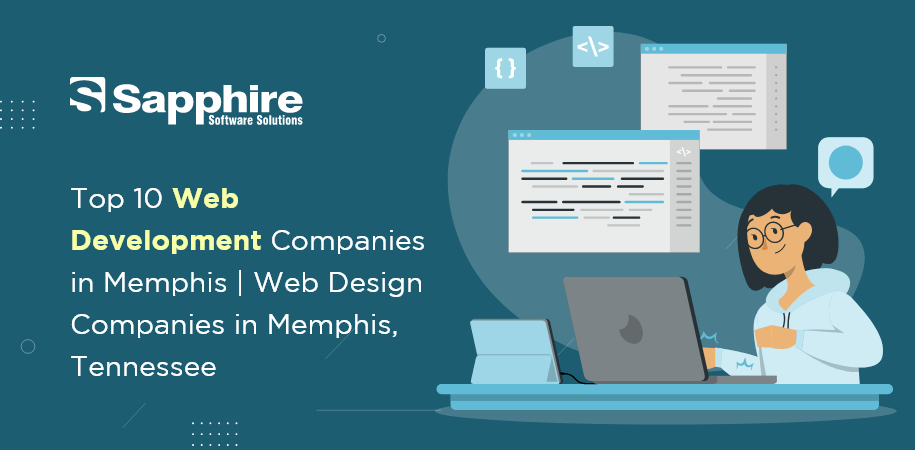
Hello Folks!!
Today, we are going to discuss some of the best web development companies.
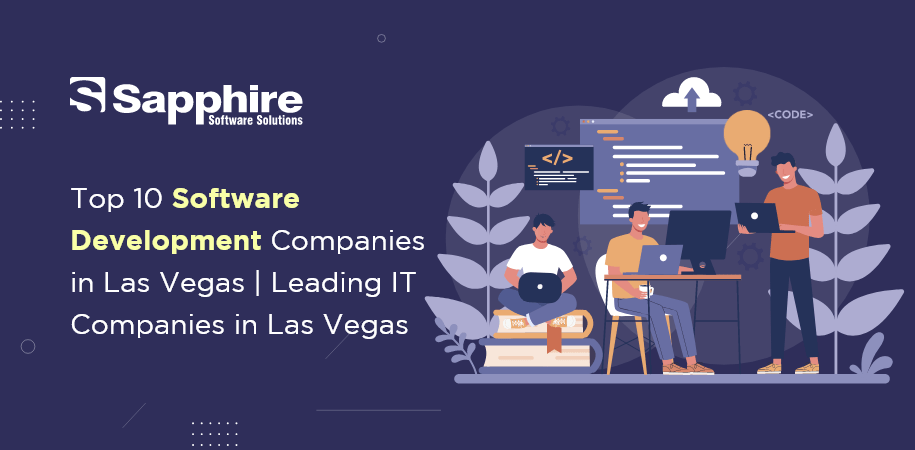
Hello Folks!!
Today, we are going to discuss some of the best software development companies in Las Vegas.
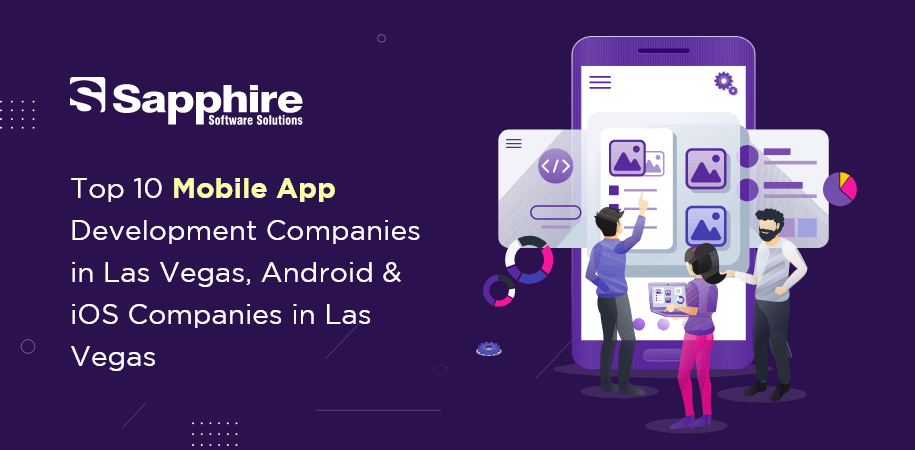
Hello Folks!!
Today, we are going to discuss about the top mobile app development companies in Las Vegas.
